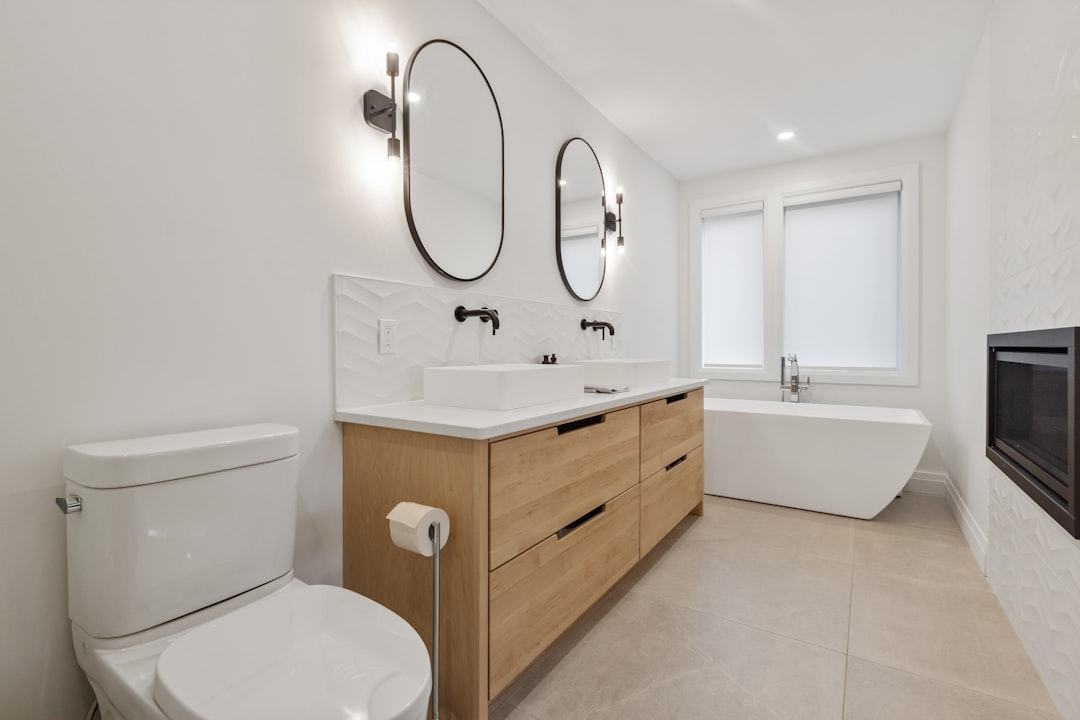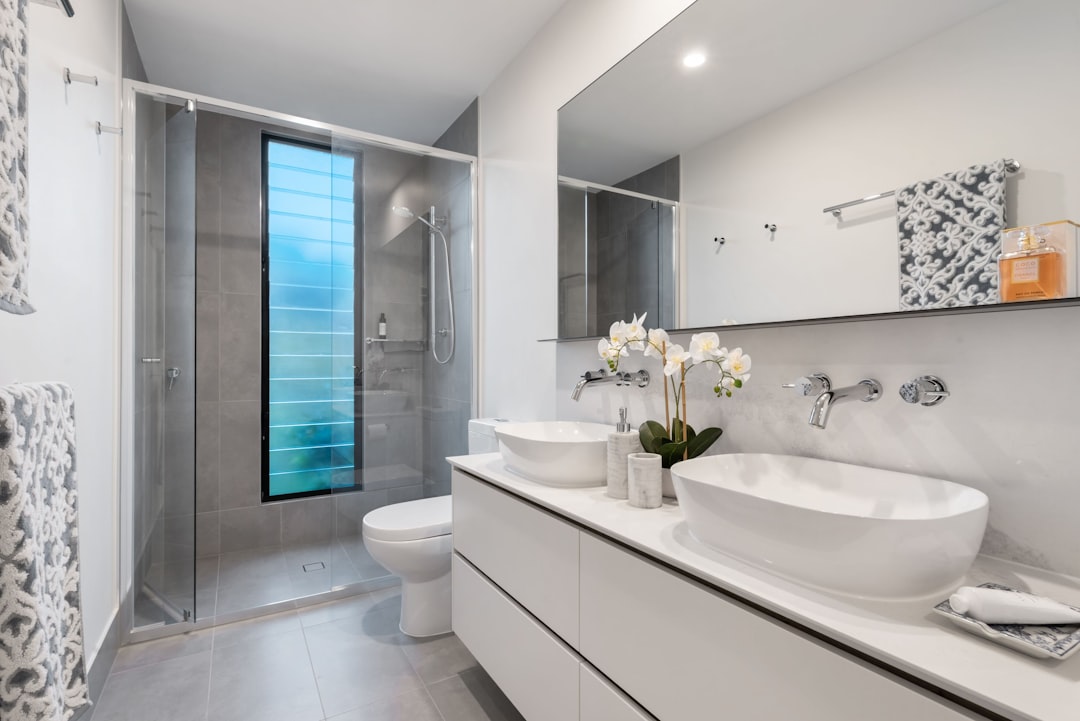Bathrooms are rooms dedicated to personal hygiene. Indoor plumbing enables people to bathe and relieve themselves without going outdoors or filling a tub with water that was heated on a stove.
While indoor bathrooms have been commonplace since the 1940s, approximately 50 percent of homes in the United States had electrical power by 1925. Since water conducts electricity, having electrical components in bathrooms poses a potential safety hazard. Still, the wiring’s crucial in bathrooms for several reasons. Let’s look at standard electrical components found in bathrooms and how to make your bathroom a safe space.
What standard electrical components do bathrooms have?

Every bathroom has electrical wiring. The wiring connects to overhead lighting, ensuring bathrooms are well lit. Lighting’s crucial in bathrooms because it ensures people can see where they’re going. Since many fixtures are made from durable materials such as fiberglass and porcelain, you must install features like lights to prevent falls and bumps while using the bathroom.
Bathrooms usually contain fans to promote good air circulation and ventilation. Your ventilation system extracts moisture and foul odors from the air. Consequently, your fan and ventilation system prevents mold from growing on your fixtures and inside bathroom walls by controlling the humidity levels. Some fans have built-in heat lamps that produce heat and help keep your bathroom warm.
Bathrooms also contain electrical outlets. The National Electric Code (NEC) requires bathrooms to include an outlet with a ground fault circuit interrupter (GFCI). Any outlets in areas with potential water exposure must be GFCI-protected to prevent shocks. People use outlets near sinks to run hairdryers, curling irons, and electric razors. The outlets must also have arc-fault circuit interrupter (AFCI) protection to prevent shocks and sparks, starting fires.
Electrical engineers create bathroom-friendly electronic components that comply with NEC guidelines. You can pursue a career in this field by completing online classes for electrical engineering. Most program applicants earn a bachelor’s degree in engineering or engineering technology before applying to a master’s degree program. Electrical engineers must complete 30 credit hours of graduate studies to earn their master’s degree, learning about sensors, intelligent industrial controllers, industrial artificial intelligence, and machine-learning tools. Graduates may work as electrical technicians, electrical engineers, controls engineers, or electrical designers.
How can you make your bathroom a safe space?

Preventing shocks and fires with appropriate electrical components is critical for bathroom safety. You can also promote bathroom safety by locating outlets away from showers and bathtubs and ensuring outlets are above the sink. Outlets shouldn’t be placed below water sources that could leak into the outlet.
Electricity isn’t the only potential safety hazard in your bathroom. Bathroom injuries send hundreds of thousands of people to emergency rooms every year. It’s easy for people to slip on water that’s spilled on the floor or to lose balance when sitting down, standing up, or stepping over the bathtub wall.
Bathroom remodeling experts can install new features and update existing features to improve bathroom safety. When you invest in bathroom remodeling in Amarillo, TX, you can opt for a bathtub replacement or convert your bathtub into a shower. Installing a shower seat is a great option, enabling you to sit when showering if you get fatigued. You can also have grab bars and nonslip flooring installed in your bathroom. Holding these bars while getting in or out of a bathtub is an effective way to maintain your balance and prevent falls. Placing grab bars by the toilet also reduces the chances of falling while sitting or standing. Nonslip flooring helps reduce the chances you’ll slip on the floor and fall.
Bathrooms contain many electrical components, including lights, fans, and outlets. NEC guidelines outline safe electrical components for bathrooms. You can also promote bathroom safety by converting your tub into a shower and installing grab bars.

